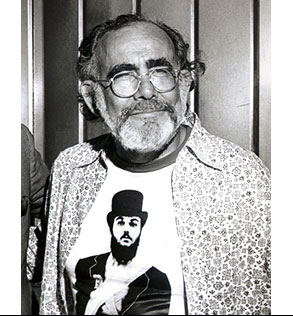Evolving out of jump blues in the late '40s, R&B laid the groundwork for rock & roll. R&B kept the tempo and the drive of jump blues, but its instrumentation was sparer and the emphasis was on the song, not improvisation. It was blues chord changes played with an insistent backbeat. During the '50s, R&B was dominated by vocalists like Ray Charles and Ruth Brown, as well as vocal groups like the Drifters and the Coasters. Eventually, R&B metamorphosed into soul, which was funkier and looser than the pile-driving rhythms of R&B. Soul came to describe a number of R&B-based music styles. From the bouncy, catchy acts at Motown to the horn-driven, gritty soul of Stax/Volt, there was an immense amount of diversity within soul.
During the first part of the '60s, soul music remained close to its R&B roots. However, musicians pushed the music in different directions; usually, different regions of America produced different kinds of soul. In urban centers like New York, Philadelphia, and Chicago, the music concentrated on vocal interplay and smooth productions. In Detroit, Motown concentrated on creating a pop-oriented sound that was informed equally by gospel, R&B, and rock & roll. In the South, the music became harder and tougher, relying on syncopated rhythms, raw vocals, and blaring horns. All of these styles formed soul, which ruled the black music charts throughout the '60s and also frequently crossed over into the pop charts.
During the '60s and '70s, soul began to splinter apart -- artists like James Brown and Sly Stone developed funk; Kenny Gamble and Leon Huff initiated Philly soul with the O'Jays and Harold Melvin & the Blue Notes; and later in the decade, danceable R&B became a mass phenomenon with the brief disco fad. During the '80s and '90s, the polished, less earthy sound of urban and quiet storm ruled the airwaves, but even then, R&B began adding stylistic components of hip-hop until -- by the end of the millennium -- there were hundreds of artists who featured both rapping and singing on their records.
Information supplied by allmusic.com
 |
The term 'Rhythm and Blues' was first introduced into the American lexicon in the late 1940s: the name's origin was created for use as a musical marketing term by Billboard magazine.
In 1949, then-Billboard magazine reporter Jerry Wexler (who later went on to become an influential music producer) created the term for Billboard to designate upbeat popular music performed by African American artists that combined Blues and Jazz. |
|
| Jerry Wexler |
The "Rhythm & Blues" term was created to replace the designation "race music," which until then was the standard catch-all phrase used in reference to most music made by blacks at the time. After the "race music" term was deemed offensive, Billboard began using the Rhythm & Blues name that Wexler created.
In the 1950s, Rhythm and Blues music was associated with black youth in honky-tonks and after-hours clubs, and it was often dismissed as a lowbrow style of art compared to Jazz's more highbrow form of black expression. As hip hop music arose and began to dominate the black social scene, R&B became thought of as "a bunch of love songs".
By the 1970s, the term rhythm and blues expanded to become a blanket term that included both soul and funk forms of music. And today, the term can be used to loosely define most sung African-American urban music, even though soul and funk can be placed in categories of their own.
Defining Characteristics
The meaning behind the name is this: the "rhythm" part comes from the music's typical dependence on four-beat measures or bars and the liberal use of a backbeat, in which the second and fourth beats are accented in each measure. And the "blues" portion comes from the lyrics and melodies of the songs, which were often sad, or 'blue', especially during the music's emergence in the World War II era. Over time the name was shortened to R&B as a matter of convenience.
In classic R&B, there is a straight up stacking of vocal harmonies, which writer-musician Stuart Goosman says reminds him of the urban environments of Baltimore and Washington DC where the music got its start. He suggests that the physical and psychic aspects of the city, in particular, those cities' urban segregation, helped shape the consciousness of the musicians, who freed themselves through the limitlessness of singing, engaging the imagination to soar beyond the limitations of place.
Pioneering Groups and Contemporary Artists
Pioneering R&B groups in the 1940s and 50s included The Cardinals, the Swallows, Dunbar Four / Hi Fi's, the Four Bars of Rhythm, the Five Blue Notes, the Melodaires, the Armstrong Four, the Clovers, and the Buddies / Capt-Tans. The musicians of these bands were mostly born before 1935 and came of age about 1947.
Examples of popular contemporary R&B artists include Usher, Alicia Keys, R. Kelly and Jennifer Hudson.
Sources:
- Goosman SL. 2005. Group Harmony: The Black Urban Roots of Rhythm and Blues. Philadelphia: University of Pennsylvania Press.
- Neal MA. 2013. Songs in the Key of Black Life: A Rhythm and Blues Nation. London: Routledge.
R&B Indiegogo v3 0 1 - Large from Kashif on Vimeo.

